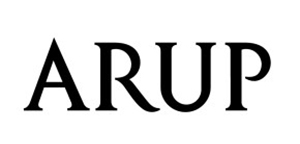Cohort 5
 Caitlin Cook
Caitlin Cook
- One Planet DTP Researcher Geography and Environmental Science
- Email: caitlin.a.cook@northumbria.ac.uk
- Twitter: @Caitlin_A_Cook
- Based at: Northumbria University
Project Title:
Astro-turfing the city: quantifying the impact of artificial lawns on the structure and function of urban ecosystems
Bio:
I have followed my interests in the environment and human interactions with ecosystems through my Zoology degree and into my current research. I have previously studied the invasive species Himalayan balsam and its decomposition, which drew me to how simple actions in private gardens can have larger ecological consequences. This led me to my current research investigating the extent, impacts, and motivations behind installations of artificial lawns. I enjoy interdisciplinary research, bringing together the use of remote sensing technologies with field observations and social science. Through my research I aspire to contribute novel insights into the wider implications of installations of artificial lawns in private gardens. I am excited to continue discovering and growing on my journey in the academic community.
Supervisory Team:
- Dr Mark Goddard (Principal – Northumbria University)
- Dr Miranda Prendergast-Miller (Northumbria University)
- Dr Rachel Gaulton (Newcastle University)
- Dr Chloe Sutcliffe (Royal Horticultural Society)
Project overview:
Lawns are a major land cover in urban ecosystems, covering 50-70% of urban greenspace (Ignatieva et al., 2020). Lawns can have harmful ecological consequences, for example through chemical application. However, they provide a range of ecosystem services from carbon sequestration, mitigation of the urban heat island effect, and rain infiltration to cultural services such as recreation. A growing demand for low maintenance alternatives to lawns has led to the uptake of artificial lawns – surfaces of synthetic fibres made to look like natural grass. However, little is known about the implications of this growing trend. This project uses a range of techniques to quantify the impact of artificial lawns on urban ecosystems. Remote sensing will assess the distribution and coverage of artificial lawns as well as the habitat lost. Field experiments will compare ecological measurements between natural and artificial grass. A survey will provide insight into the social drivers underlying this land use change and identify practises to facilitate more sustainable gardening.
Research Questions:
1. What is the current extent of artificial lawns in the UK and how has this changed over time?
2. Are there demographic trends present across artificial lawn owning households/
3. What are the environmental impacts of artificial lawns?
Qualifications:
Newcastle University: 2019-2023: MBiol Zoology (Hons) 2019-2023
Skills:
Coding - R, Fieldwork, Remote Sensing, Statistical Modelling
Hobbies:
Hiking, Reading, Family Time








